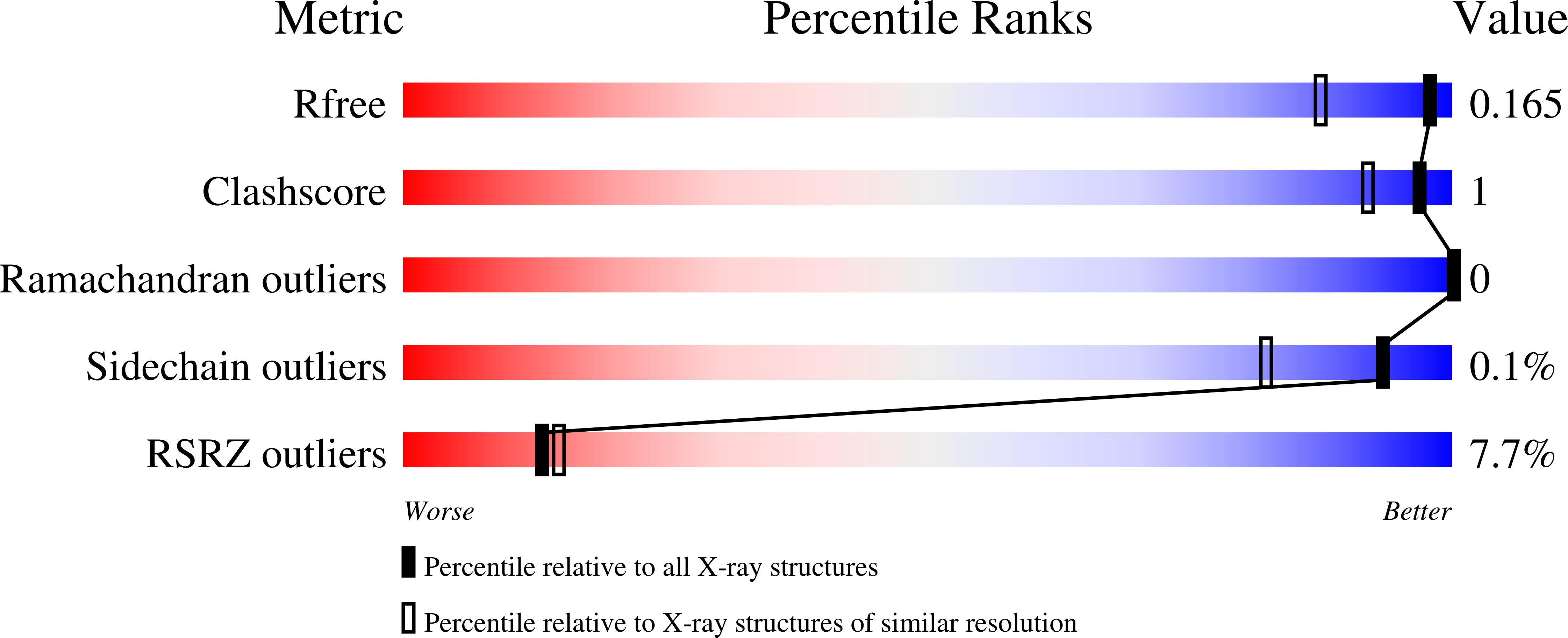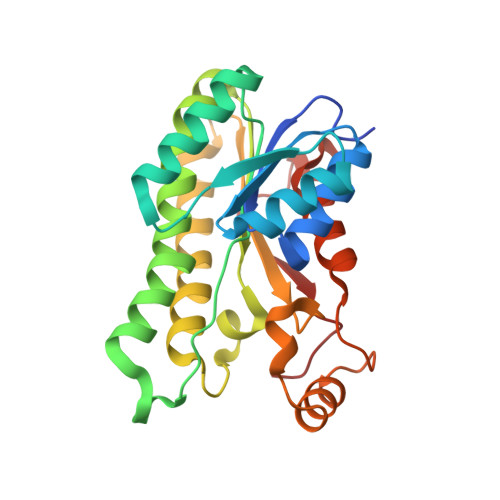Biochemical and Structural Studies of NADH-Dependent FabG Used To Increase the Bacterial Production of Fatty Acids under Anaerobic Conditions.
Javidpour, P., Pereira, J.H., Goh, E.B., McAndrew, R.P., Ma, S.M., Friedland, G.D., Keasling, J.D., Chhabra, S.R., Adams, P.D., Beller, H.R.(2014) Appl Environ Microbiol 80: 497-505
- PubMed: 24212572
- DOI: https://doi.org/10.1128/AEM.03194-13
- Primary Citation of Related Structures:
4NBT, 4NBU, 4NBV, 4NBW - PubMed Abstract:
Major efforts in bioenergy research have focused on producing fuels that can directly replace petroleum-derived gasoline and diesel fuel through metabolic engineering of microbial fatty acid biosynthetic pathways. Typically, growth and pathway induction are conducted under aerobic conditions, but for operational efficiency in an industrial context, anaerobic culture conditions would be preferred to obviate the need to maintain specific dissolved oxygen concentrations and to maximize the proportion of reducing equivalents directed to biofuel biosynthesis rather than ATP production. A major concern with fermentative growth conditions is elevated NADH levels, which can adversely affect cell physiology. The purpose of this study was to identify homologs of Escherichia coli FabG, an essential reductase involved in fatty acid biosynthesis, that display a higher preference for NADH than for NADPH as a cofactor. Four potential NADH-dependent FabG variants were identified through bioinformatic analyses supported by crystallographic structure determination (1.3- to 2.0-Å resolution). In vitro assays of cofactor (NADH/NADPH) preference in the four variants showed up to ≈ 35-fold preference for NADH, which was observed with the Cupriavidus taiwanensis FabG variant. In addition, FabG homologs were overexpressed in fatty acid- and methyl ketone-overproducing E. coli host strains under anaerobic conditions, and the C. taiwanensis variant led to a 60% higher free fatty acid titer and 75% higher methyl ketone titer relative to the titers of the control strains. With further engineering, this work could serve as a starting point for establishing a microbial host strain for production of fatty acid-derived biofuels (e.g., methyl ketones) under anaerobic conditions.
Organizational Affiliation:
Joint BioEnergy Institute, Emeryville, California, USA.
















